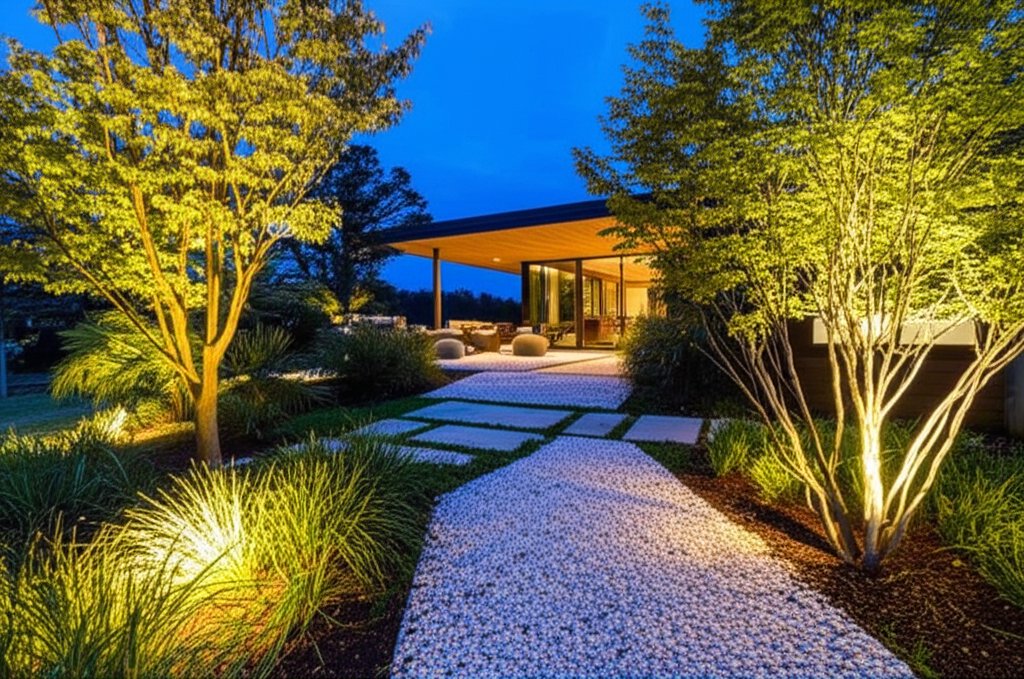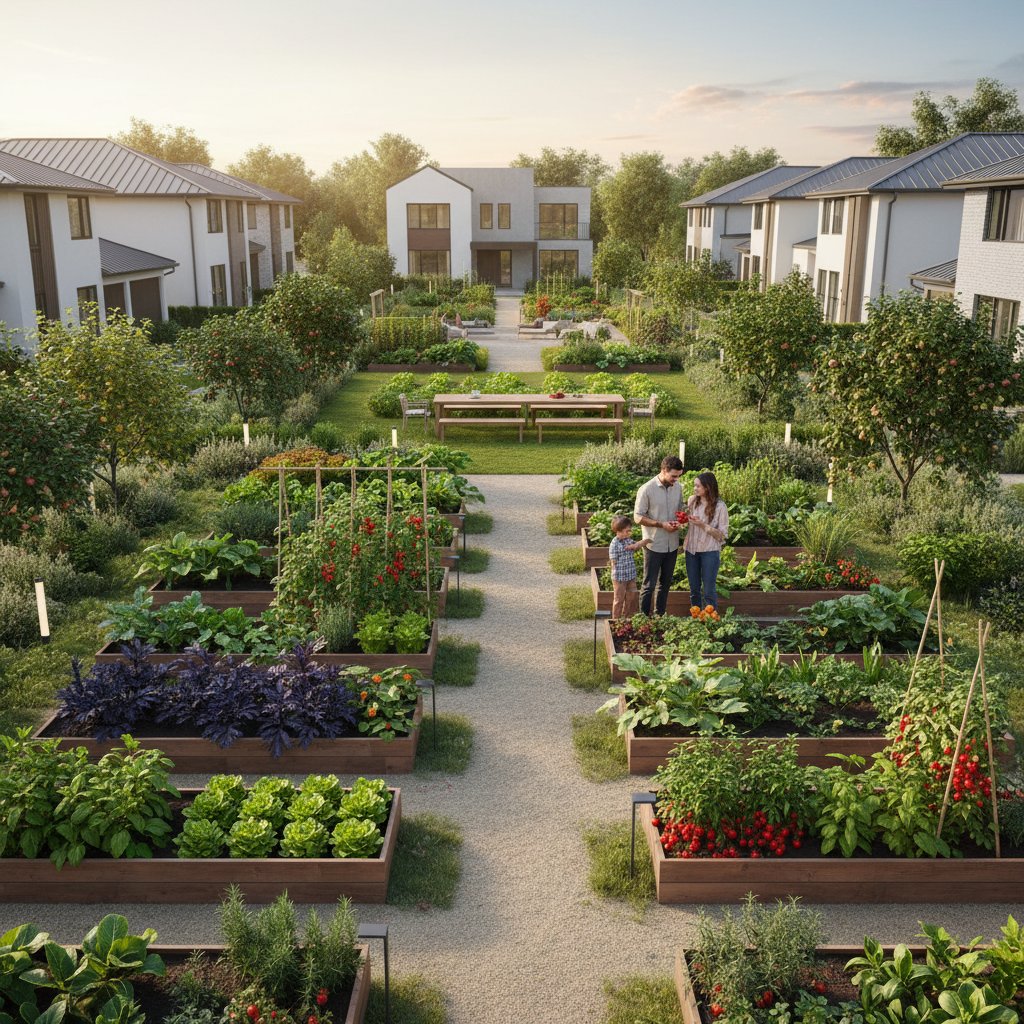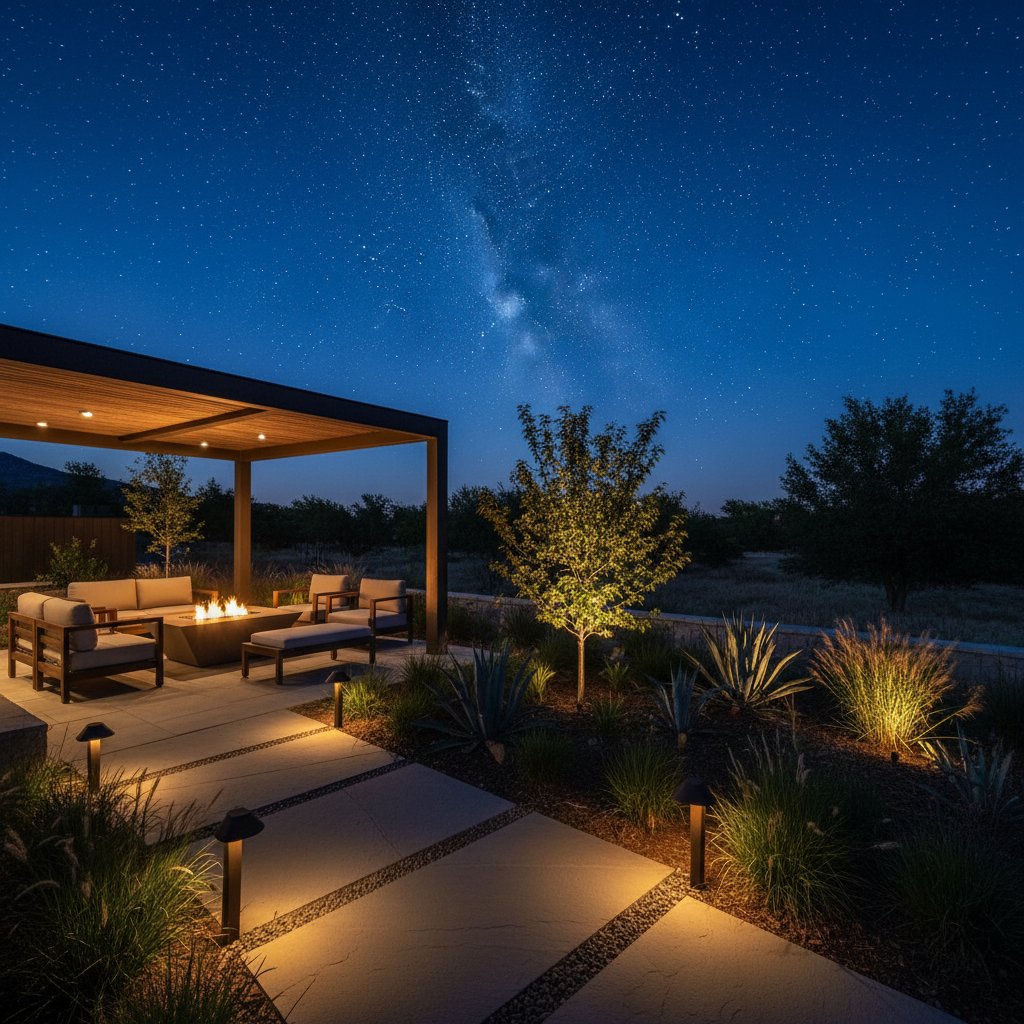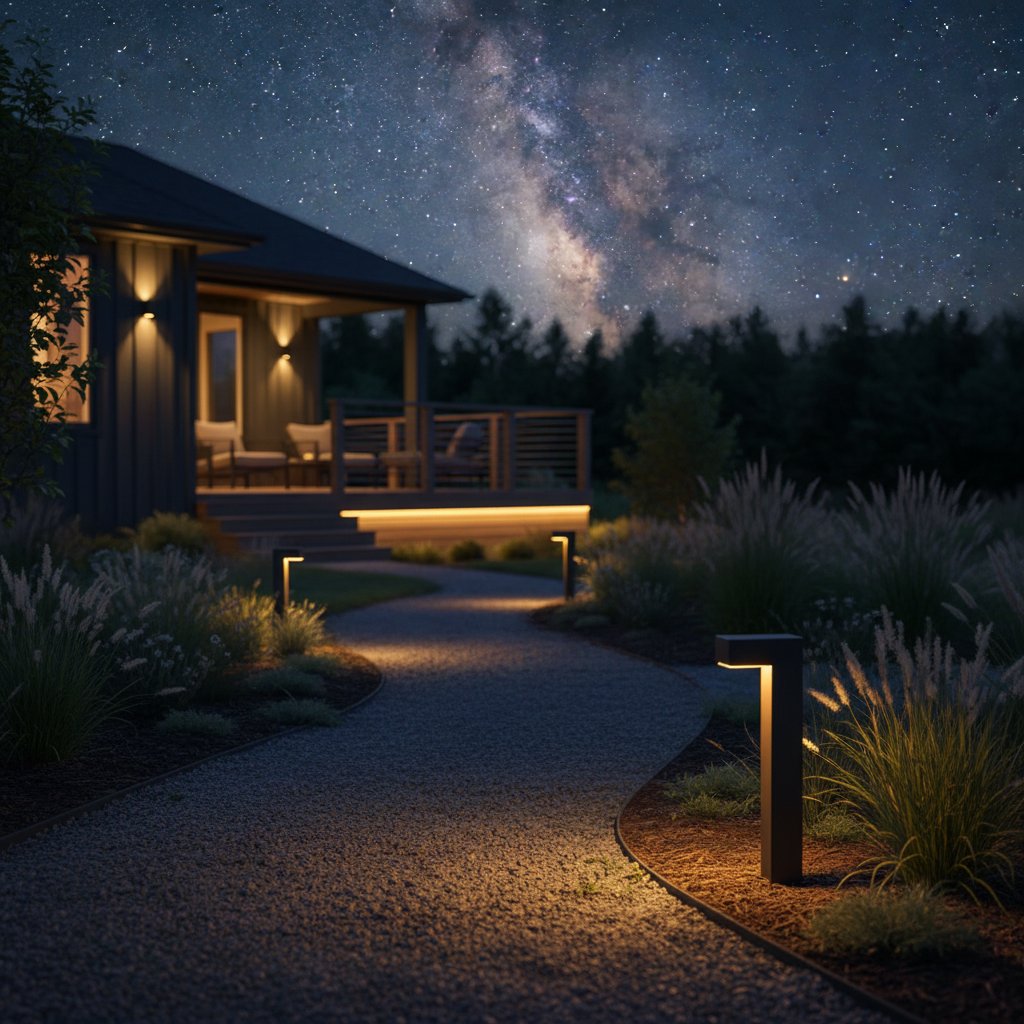2025 Low-Light Landscaping Strategies for Starry Nights
As daylight fades, your landscape transforms into a serene extension of the evening sky. Low-light landscaping ensures safe navigation while preserving the darkness essential for stargazing and wildlife harmony. This approach integrates minimal illumination with natural elements to foster tranquility without overwhelming the night.
Homeowners increasingly adopt low-light designs to address energy conservation and light pollution concerns. These landscapes emphasize gentle lighting, shade-adapted vegetation, and materials that enhance subtle glows. The outcome is an outdoor area that aligns with natural cycles, promoting relaxation and environmental stewardship.
This guide outlines essential principles for developing a low-light landscape. Readers will gain insights into lighting selections, plant recommendations, material integrations, and spatial arrangements that adhere to dark-sky standards.
Fundamentals of Dark-Sky Compliant Lighting
Dark-sky lighting directs illumination downward to minimize skyward spill and glare. Select fixtures equipped with shields, hoods, or full cutoffs to contain light at ground level. This method maintains usability while safeguarding celestial views and reducing ecological disruption.
Recommended Fixture Categories
- Pathway Illuminators: Compact units positioned along trails or borders, featuring opaque enclosures to prevent upward light escape. Opt for models with adjustable heights to suit varied terrain.
- Step and Riser Lights: Recessed installations in stairs or low walls that provide targeted visibility for footing. Integrate them seamlessly to avoid visual clutter.
- Accent Spotlights: Deploy these judiciously to accentuate focal points like foliage or architectural features. Angle them precisely to limit beam spread and spillover.
- Bollard Luminaires: Upright columns that emit diffused light close to the surface. Prioritize designs with louvers or diffusers for controlled output.
- Solar-Powered Options: Self-contained units that harness daylight for nighttime operation. Position them in sunny spots during the day for optimal performance in peripheral zones.
Optimal Light Temperature and Output
Select bulbs with a warm color temperature of approximately 2700K to emulate natural twilight hues. This choice supports wildlife rhythms by avoiding the disorientation caused by cooler, bluish tones.
Adhere to the principle of minimal viable intensity: for instance, pathway lights at 100 lumens suffice for clear delineation without dominating the ambiance. Test installations at dusk to calibrate levels, ensuring they complement rather than compete with ambient darkness.
Selecting Hardscape Materials for Subtle Illumination
Hardscape elements influence light distribution and perception after sunset. Prioritize finishes that diffuse rather than amplify reflections to maintain a cohesive, understated aesthetic.
Surfaces for Gentle Light Reflection
- Natural Stone Pathways: Materials such as flagstone or slate offer inherent texture that scatters light softly, providing subtle guidance without stark contrasts.
- Light-Toned Gravel Beds: These aggregates capture and redistribute minimal light to outline routes, enhancing safety in low-traffic zones.
- Aged Timber Elements: Decked paths or benches from reclaimed wood absorb excess light, creating smooth gradients between illuminated and shadowed regions.
- Matte Paver Installations: Choose non-reflective surfaces to prevent hotspots, particularly in moisture-prone areas where gloss could intensify glare.
Architectural Features for Light Direction
Incorporate retaining walls, arbors, or terraced planters to channel light effectively. For example, embed linear LED strips behind a low boundary wall to produce a welcoming, horizontal wash.
Overhead structures like pergolas support draped lighting such as festoon bulbs, confined to seating vicinities for intimate effects. Evaluate surface textures during planning: irregular patterns foster intriguing shadows, while even planes distribute light evenly.
Strategies to Minimize Light Pollution
Light pollution arises from unintended spill, often directed skyward or across boundaries, leading to energy inefficiency and obscured horizons. Effective mitigation preserves both personal enjoyment and communal nightscapes.
Implement these measures:
- Install fully shielded luminaires that confine output to intended surfaces.
- Refrain from vertical uplighting on vertical elements; substitute with ground-based, downward-angled alternatives for emphasis.
- Incorporate automated controls like photocell timers or motion detectors to activate lighting only during necessary periods.
- Scale intensity to essentials, thereby curbing waste and visual intrusion.
Such practices not only conserve resources but also cultivate harmonious neighborhood environments.
Cultivating Nighttime Sky Appreciation
Low-light landscapes restore access to the cosmos, unveiling phenomena like meteor showers and planetary alignments from home. Eliminate harsh contrasts to allow pupil adaptation, revealing intricate stellar patterns.
Designate a dedicated observation nook with an adjustable chaise or suspended swing. Surround it with minimal perimeter lighting to facilitate access while prioritizing skyward clarity. Enhance the setting with a contained fire feature for subtle warmth, steering clear of open flames that could introduce flicker.
For avid stargazers, site furniture amid open clearings, free from canopy obstruction. Employ faint trail markers to approach the area unobtrusively, ensuring the focus remains on overhead wonders.
Implementing Your Low-Light Design
Low-light landscaping extends beyond efficiency to evoke nocturnal serenity. Begin with nocturnal site analysis: observe movement patterns and aesthetic potentials under existing conditions to identify lighting priorities.
Incorporate shade-tolerant species such as hostas, ferns, and astilbes, which provide volumetric interest in dim settings through varied foliage shapes. Pair them with warm-toned, directional fixtures and organic hardscapes to layer depth and serenity.
Engage specialists versed in dark-sky protocols for bespoke solutions, including precise fixture mapping and photometric assessments. Upon completion, conduct a twilight walkthrough to fine-tune elements, appreciating how diffused light accentuates botanical contours, lithic gleams, and celestial brilliance.



